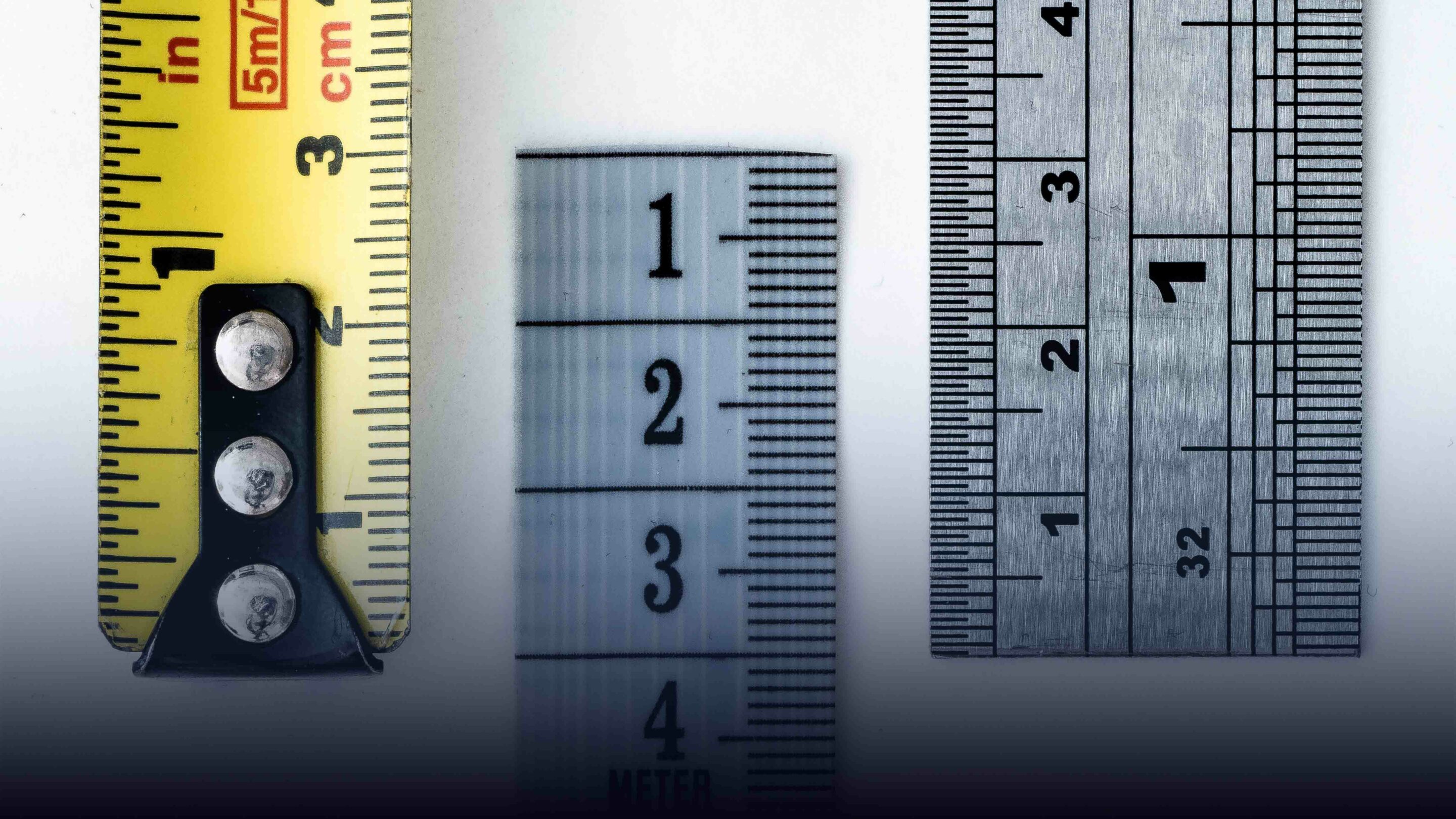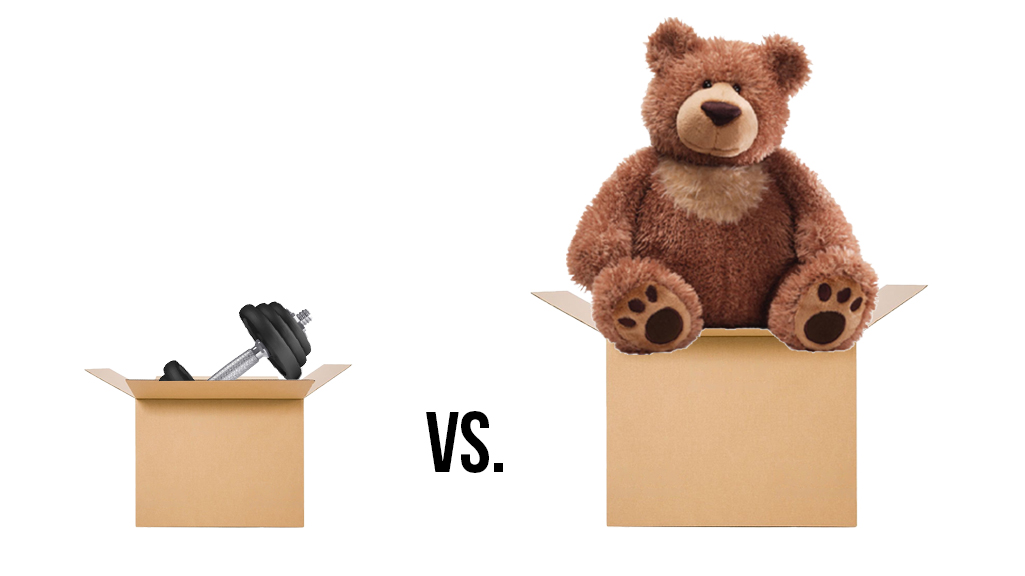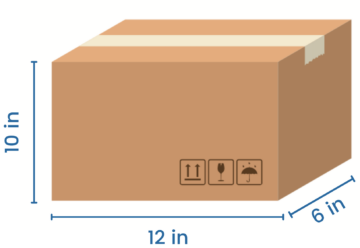
Dive into the world of shipping logistics with our comprehensive guide on Dimensional Weight (DIM). This essential read navigates you through calculating DIM weight, it’s significance in shipping costs, the carrier-specific rules, and practical strategies for cost reduction. Empower your e-commerce or shipping enterprise with the knowledge to optimize packaging, streamline operations, and ultimately boost profitability.
Jump right in: The Comprehensive Guide to Dimensional Weight
- I. Introduction to Understanding Dimensional Weight
- II. Dimensional Weight vs Actual Weight
- III. Calculating Dimensional Weight
- IV. Common Mistakes in Dimensional Weight Calculation
- V. Effective Packaging Strategies
- VI. Impact of Dimensional Weight in E-commerce
- VII. Cost Reduction Strategies
- VIII.Dimensional Weight and International Shipments
- IX. Carrier Regulations on Dimensional Weight
- Summary
- FAQs
Introduction to Understanding Dimensional Weight
In the realm of logistics, freight, and shipping, Dimensional Weight or DIM weight plays a critical role. Simply put, it refers to the calculated weight of a package based on its dimensions (length, width, and height) rather than its actual weight. The rationale behind DIM weight is that space, not just weight, influences the cost of shipping a package.
This concept, born out of necessity in the mid-20th century, revolutionized the shipping industry. Air freight carriers found themselves in situations where lightweight but bulky packages were taking up precious cargo space. As a result, they introduced dimensional weight to charge for the space a package occupied, ultimately encouraging shippers to optimize their packaging.
This article serves as your comprehensive guide to dimensional weight, offering an overview into various facets of this important logistics concept. From understanding how to calculate DIM weight, to packaging strategies and the impact on e-commerce, to the possible future of DIM weight – we’ve got you covered. We will also connect you to a wealth of supporting articles and sub-topics that further delve into each aspect.
Dimensional Weight (DIM Weight):
A pricing technique used for commercial freight transport, including courier and postal services. It considers the overall volume of a package in relation to its actual weight. This pricing method takes into account the amount of space a package occupies during shipping, as opposed to just the actual weight.
Dimensional Weight vs Actual Weight

When dealing with shipping logistics, it’s important to distinguish between two critical concepts: Actual Weight and Dimensional Weight.
The actual weight is straightforward – it’s the physical weight of the package when placed on a scale. This measurement is usually in pounds (lbs) or kilograms (kg) and forms the basis of traditional shipping costs.
Dimensional weight, on the other hand, represents a balance between package weight and size. It calculates the space a package occupies in relation to its actual weight, thereby ensuring that carriers are compensated for the space a parcel takes up in their vehicle or aircraft, not just its weight.
When is DIM Weight or Actual Weight Considered?
Now, the application of dimensional weight arises whenever the actual weight of the package is less than its calculated dimensional weight. For instance, if you’re shipping something heavy and compact like an exercise weight, the shipment will typically be billed based on the actual weight of the package. Conversely, when shipping a light and bulky item, like a large plush toy or lightweight bike frame, it is more likely to be billed for dimensional weight.
In essence, dimensional weight reflects the ‘cost of space’ while actual weight considers the ‘cost of carrying’. These two measurements may lead to different pricing, especially in cases of large yet lightweight items. Therefore, understanding the contrast and application of these two measurements is vital to optimize shipping costs.
How to Calculate Dimensional Weight

The calculation of Dimensional Weight hinges on two pivotal factors: the physical dimensions of the package and the dimensional weight divisor set by the shipping carrier. The physical dimensions consist of the length, width, and height of the package, measured in inches or centimeters. The dimensional weight divisor, on the other hand, is a standard value defined by the carrier or 3PL and can vary between domestic and international shipments.
The formula for calculating dimensional weight is as follows:
Dimensional Weight (lbs) = (Length x Width x Height) / Dimensional Weight Divisor
Here:
Length, Width, and Height are the measurements of the package’s dimensions, often in inches.
The Dimensional Weight Divisor is a value set by the carrier, commonly around 139 for domestic shipments and 166 for international shipments in the case of certain carriers.
The process of calculating dimensional weight typically involves multiplying the length, width, and height of a package, then dividing the result by the carrier’s dimensional weight divisor. The answer, often rounded up to the nearest whole number, is the dimensional weight of the package. Remember, different carriers might use different divisors, so always verify with your chosen carrier.
See how DIM weight affects your shipping costs with our DIM Weight Calculator
For a detailed, step-by-step guide on dimensional weight calculation, we invite you to visit our article on “HOW TO CALCULATE DIMENSIONAL WEIGHT“. Here, you’ll learn how to calculate DIM weight for different packages as well as use a DIM weight calculator to determine your package pricing.
Common Mistakes in Dimensional Weight Calculation

Calculating Dimensional Weight might seem straightforward, but it’s not uncommon to stumble into a few pitfalls. Here are three common mistakes you should be aware of:
Not Accounting for Packaging: One of the most prevalent mistakes is failing to include the packaging in the total dimensions. Additions like a pallet or protective material could significantly alter the overall dimensions, thereby changing the calculated dimensional weight. Always remember, it’s the final, ready-to-ship package dimensions that you should consider.
Incorrect Rounding of Calculations: The devil is in the details, and in this case, it’s in the decimal points. Dimensional weight is usually rounded up to the nearest whole pound or kilogram, not down. Overlooking this crucial detail can lead to miscalculations in your shipping costs.
Overlooking Varying DIM Divisors: Shippers often neglect that different carriers apply different dimensional weight divisors for domestic and international shipments. Failing to consider these variations can result in unforeseen shipping costs.
Avoiding these common errors can make a significant difference in optimizing your shipping costs and improving operational efficiency.
Effective Packaging Strategies

DIM weight packaging strategies greatly influences the overall dimensions of your shipment, making it a key player in determining the Dimensional Weight and ultimately the shipping cost. Here are key considerations for effective packaging:
Optimizing Package Dimensions: Reducing package dimensions can significantly decrease the DIM weight. This can involve using custom-sized boxes that closely fit the item, reducing unnecessary filler material, or even adopting innovative packaging designs that maximize space efficiency.
Choosing the Right Packaging Materials: Beyond the dimensions, the type of packaging material also matters. The weight, durability, and flexibility of your chosen materials can affect the dimensional weight, not to mention the protective ability of the package during transit.
Balancing Efficiency and Protection: While reducing package size is beneficial, it should never come at the expense of the item’s safety. It’s essential to strike a balance between reducing DIM weight and ensuring the integrity of the shipped items.
Interested in discovering more about efficient packaging strategies?
Visit our page on “Reducing Your Dimensional Weight: 7 Key Packaging Strategies” for practical techniques to minimize DIM weight.
Impact of Dimensional Weight in E-commerce

Dimensional Weight plays an integral role in e-commerce logistics. With online retail thriving and businesses shipping a vast array of products, understanding the concept of DIM weight is crucial to your success.
In e-commerce, shipping cost forms a significant part of the total cost. If not accurately calculated, DIM weight can inflate these costs and cut into profit margins. On the flip side, an understanding of DIM weight can lead to better packaging strategies, reducing shipping costs, and increasing profitability.
Furthermore, customer satisfaction can hinge on shipping costs. Overestimating DIM weight might result in higher shipping fees for customers, possibly leading to abandoned shopping carts. Conversely, underestimating could mean absorbing the extra costs, which can hurt your bottom line.
Cost Reduction Strategies

Understanding and optimizing Dimensional Weight plays a pivotal role in your quest to reduce shipping costs. Here are some effective strategies to consider:
Efficient Packaging: Tweaking your packaging methods can result in significant savings. Using custom boxes or minimizing filler material reduces package dimensions and consequently the DIM weight.
Negotiating with Carriers: Don’t shy away from negotiating with your carriers for lower dimensional divisors or discounted rates, especially if your business deals with high shipping volumes.
Optimization of Shipping Volumes: Shipping items in bulk rather than individually can lead to substantial cost savings. So, always look for opportunities to consolidate your shipments.
Exploring Different Carriers: Different carriers or 3PLs may offer different dimensional weight divisors and shipping rates. So, it might be beneficial to explore different options and choose the most cost-effective one.
Dimensional Weight and International Shipments

Dimensional Weight can greatly influence the cost dynamics of international shipments, affecting both imports and exports. Each carrier and country might have different policies regarding DIM weight, and these variances could significantly affect the shipping cost for international products.
Businesses need to be aware of these differences and should consider dimensional weight when planning their international logistics strategies. The nature of international shipping often implies larger distances, increased handling, and more complex logistics, all of which may lead to higher dimensional weight divisors.
To optimize international shipping, it’s advisable to fully understand carrier regulations, properly calculate dimensional weight, and utilize efficient packaging strategies. These measures can significantly reduce shipping costs and enhance the profitability of your international operations.
Carrier Regulations on Dimensional Weight

Regulations on Dimensional Weight (DIM) vary across different carriers, creating a complex tapestry of rules and standards that businesses need to navigate. Each leading carrier has unique regulations pertaining to dimensional weight. Here are some specifics:
UPS:
Switched to dimensional weight pricing for all ground shipments a few years ago, fundamentally altering the pricing landscape. For UPS Ground and Express use a DIM divisor of 139.
FedEx:
Similar to UPS, FedEx also uses dimensional weight pricing for all ground shipments with a DIM divisor of 139.
USPS:
While using DIM weight pricing, USPS typically applies it only for packages above a certain size or those destined for specific zones. USPS uses a DIM divisor of 166 for packages larger than 1,728 cubic inches (or 1 cubic foot).
Ensuring compliance with these carrier-specific regulations is paramount for seamless and cost-effective shipping. Businesses must stay updated on any changes in DIM regulations and promptly adjust their shipping strategies accordingly.
DIM Weight Divisor Example:
As a practical example, suppose you’re shipping a large, lightweight box domestically via FedEx. The box’s dimensions are 30 inches by 40 inches by 30 inches, giving it a total of 36,000 cubic inches. Using FedEx’s standard DIM divisor of 139, you would calculate the dimensional weight as follows: 36,000 divided by 139, which roughly equals 259 lbs. Despite the box potentially being much lighter, its dimensional weight for shipping purposes would be considered as 259 lbs due to the significant space it occupies.
Let Us Cut Your
Shipping Weight in Half!
Partnering with a 3PL can save you money on DIM Weight Charges.
We lower your cost by offering the best dimensional shipping weight in the industry. View the example below and contact your sales rep to learn more.

| Actual Weight Package | 3 pounds |
| Ship Weight with Us | 3 pounds |
| Ship Weight with Others | 6 pounds |
| SAVING WITH US | $1.44 |
Summary
In the world of shipping and logistics, understanding and effectively utilizing the concept of Dimensional Weight (DIM) can significantly impact your shipping costs and operational efficiency. From calculating DIM weight, recognizing common mistakes, employing efficient packaging strategies, understanding the implications on e-commerce and international shipments, to adhering to carrier-specific DIM regulations, the grasp of this fundamental concept is critical for your business.
Remember, each carrier might have their own specific dimensional weight divisor, and these divisors may change based on whether a shipment is domestic or international. Thus, always verify the DIM factor directly with your carrier. By doing so, you not only ensure shipping accuracy, but also potentially uncover avenues for cost optimization.
In addition to that, effective packaging strategies and careful consideration of the packaging material and dimensions can help reduce DIM weight, leading to lower shipping costs. Similarly, understanding the impact of DIM weight on your specific industry and adjusting your logistics strategies accordingly is crucial to maintain competitiveness.
Finally, it’s essential to remember that while reducing package dimensions can decrease shipping costs, protecting the integrity of the shipped items should always be a top priority. Striking a balance between cost efficiency and product safety is key to long-term success in the shipping and logistics industry.
In the end, mastering Dimensional Weight isn’t just about minimizing costs – it’s about creating a more efficient, sustainable, and customer-friendly shipping process. Stay informed, stay flexible, and continue to evolve your shipping strategies in line with industry trends and regulations. Here’s to optimizing your shipping process and navigating the world of logistics with confidence!
FAQs: Dimensional Weight
How do I calculate the DIM weight of a package?
The Dimensional Weight (DIM weight) of a package is calculated using the formula:
(Length x Width x Height) / DIM Factor
The DIM Factor (DIM Divisor) varies based on the type of shippment and your carrier or 3PL. Make sure you know what your DIM factor is before calculating your DIM Weight.
When is DIM weight used?
DIM weight is used when the physical size of a package is disproportionately large compared to its actual weight. Courier companies charge for the space that a package occupies in their vehicle, rather than just the actual weight. If the dimensional weight of a package is higher than the actual weight, then the DIM weight is used to calculate the shipping cost.
When is Actual Weight used?
The actual weight of a package is used to calculate shipping costs when it is higher than the DIM weight. This is typically the case for heavier items that are relatively small in size. The actual weight is measured in pounds (lbs) or kilograms (kg), depending on the standard used by the specific courier service.
Does Amazon use DIM Weight?
Yes, Amazon uses DIM weight for calculating FBA (Fulfillment by Amazon) fees. They refer to it as 'volumetric weight'. The shipping cost for FBA items is determined by the greater of the unit's dimensional weight or actual weight.
How do I reduce my Dimensional Weight?
Reducing dimensional weight can lead to significant savings in shipping costs. Here are a few strategies:
Use Smaller Packaging: If possible, use a smaller box or packaging material that closely fits the size of your item. This reduces the amount of 'empty' space and hence the dimensional weight.
Consolidation: If you're shipping multiple items to the same destination, it might be cheaper to consolidate them into a single package, if appropriate.
Packaging Material: Use lighter packaging materials that provide necessary protection but don't significantly add to the weight.
Custom Packaging: In some cases, it might be worth investing in custom packaging tailored to your product to reduce the dimensional weight.
Always remember that while reducing dimensional weight, the integrity and safety of the product should not be compromised.




0 Comments